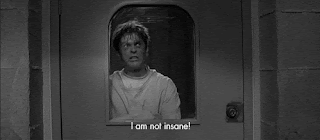The Haunting Atrocities of Topeka State Hospital
Topeka State Hospital opened its doors in 1879 and would remain open until it was forced to shut down in 1997. Within those 118 years, the institution became as notorious for its lax admissions procedures as it was for the barbaric and inhumane treatment of its patients. If you have a fear of mental institutions, Topeka State Hospital is probably the deep-seated cause of your phobia. While anything you can imagine probably went on behind its doors, here is a review of some of the most gruesome and deprave acts that occurred on the grounds of this once well-respected healthcare facility.
RIP Mr. Dodd
Little is known about Mr. Dodd, except that the staff had a strong dislike for this patient in particular. Witnesses have come forward to say they had seen staff members knock Dodd to the floor and repeatedly kick him. On one occasion, an orderly knocked Dodd to the ground and jumped up and down on his chest several times.
One day, Mr. Dodd was taken into room 18 and, once inside, the door was shut to prevent others from watching. While no one can say for sure what happened in room 18, it's safe to assume the patient was subjected to more physical abuse. In just a few minutes, Dodd's dead body was carried out of room 18 and transferred to the morgue. There was no investigation into the incident.
Even Bankers Weren't Safe at Topeka State Hospital
Smith was kept restrained in handcuffs day and night. While this might suggest he was a particularly violent patient, there are no records of violent outbursts which might suggest the need to keep him in restraints. Additionally, Smith's orderly led him about on a leash made of rope. The noose was fit snugly around his neck, even though Smith never made any attempt to flee the grounds.
From there, the abuse only grew worse. The orderly was a heavy drinker and liked to beat Smith for amusement, whenever he was drunk. One such night, the orderly tied Smith's rope to a tree and left him sitting outside like this for nearly three hours. On a separate occasion, Smith's rope was strung up over the top of a door, so the banker could be strangled for punishment.
You Can Check In, But You Can't Check Out
Since the hospital maintained such tight control, it's not surprising that they also confiscated the personal possessions of each inmate. Any money and valuables on the patient's person at the time of their committal was confiscated by hospital administrators. In addition, Topeka State Hospital pursued an action in the Supreme Court, which allowed them to seek compensation for care up until the time of each patient's death.
John Crabb: One of the Few to Escape
The police were called and Crabb was locked up in county jail. He might have gotten off with a light sentence, except the incident left John feeling depressed. He was seen sulking in his cell and refused to eat his meals. Concerned, jail attendants called upon a psychiatrist to evaluate John's state of mind. Labeled insane by the so-called expert, Mr. Crabb was transferred to Topeka State Hospital.
John knew he was not insane, but trying to convince others of that seemed to make matters worse. The more he tried to appear sane, the more insane he was deemed by the doctors at Topeka State Hospital. Frustrated by this, John protested by refusing to participate in therapy and any labor. Fortunately, a group of men from John's Danish insurance company took an interest in his case. They demanded that his sanity be tested by a third-party and, upon complying with that request, Topeka State Hospital was compelled to admit that John Crabb was indeed sane. Even so, it took another 10 months for the facility to release him. In 1951, 20 years after having been wrongfully committed, John Crabb was a free man.
In 118 years, Topeka State Hospital committed some of the most heinous acts against human beings ever recorded. Staff members committed acts of assault, rape, and forced sterilization against patients.
Was Topeka State Hospital haunted?
Some say it was and the state of Kansas would seem to agree. The hospital was demolished in 2010 and even the stone slabs that served as the facility's foundation were wrecked and removed.
Today, the site sits abandoned.









Comments
Post a Comment